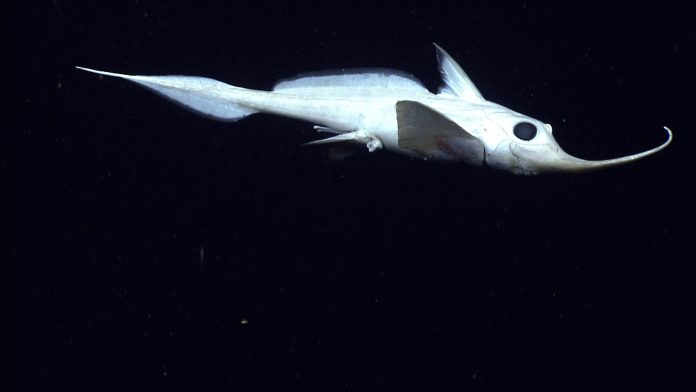Dominik Littfass, HELCOM Communication Secretary explains the biofouling – the attachment of living organisms to the hull of ships – one of the main vectors of invasions of aquatic ecosystems from alien or non-indigenous species
Biofouling – the attachment of living organisms to the hull of ships – is one of the main vectors of invasions of aquatic ecosystems from alien or non-indigenous species (NIS).
Largely due to a global increase in international maritime traffic, biofouling is estimated to be responsible for more than half of coastal and estuarine species invasions worldwide.
In the Baltic Sea, NIS pose a serious threat. Compared to other seas, the Baltic’s ecosystem is rather fragile due to its semi-enclosed nature and relatively low amount of species. As shown with the round goby, a fish thought to be introduced through ship ballast water from the Ponto-Caspian region, the introduction of alien species can lead to irreversible changes in the marine environment.
“It is extremely difficult to remove non-indigenous species from an aquatic environment,” says Marta Ruiz, HELCOM expert on biofouling, adding that once species have settled in and start to take over a new habitat, there are almost no possibilities to revert their introduction. “Once there, these species are bound to stay.”
Aggressive, territorial and voracious, the round goby is now found in all Baltic Sea sub-basins and is continuously increasing its range and abundance in recently colonised habitats, posing a strong predatory pressure essentially on epibenthic molluscs such as clams, mussels and other bivalves.
“The best way to deal with alien species is prevention, to ensure that they don’t enter and colonise other habitats,” advocates Ruiz. “One major vector of the introduction of NIS, ballast water from ships, is already being regulated. But there still is an urgent need to address biofouling.”
Contrary to the management of ship ballast water which is regulated by the IMO’s Ballast Water Management Convention (BWMC), which entered into force in 2017, biofouling is currently not controlled. Despite the IMO having issued guidelines on biofouling, there are no international regulations, with the exception of some local regulations such as in New Zealand or California.
But addressing biofouling isn’t easy and not just because of missing regulations. Many anti-fouling systems that have proven to keep hulls clear contain biocides that aren’t safe for the environment. For example, Tributyltin (TBT), which was widely used in ship paints for its biocide action, has shown to remain in the food chain for long periods of time and to disrupt the hormonal balance of living marine organisms.
The use of TBT has, therefore, been banned and other key biocides are currently being assessed and might face a similar fate. This lack of options makes biofouling management more difficult. On the other hand, having a clean hull is a benefit also to ship owners due to reduced drag, translating into increased energy efficiency, less fuel consumption and fewer emissions of exhaust gases.
In the Baltic Sea, addressing biofouling and the introduction of NIS follows a deeper agenda. The Baltic Sea is not in a good state, currently affected by a wide array of pressures such as eutrophication, hazardous substances, overfishing or the effects of climate change. Recent assessments have shown that recovery might take several decades for eutrophication alone. To give the fragile ecosystem a chance to deal with the long-term pressures, addressing the ones that are within reach should be a strategy to follow.
In its Baltic Sea Action Plan (BSAP) – the regional strategic programme for a healthy Baltic Sea – HELCOM has already formulated a management objective of “No new introductions of non-indigenous species”, echoing the EU’s Marine Strategy Framework Directive (MSFD) on the same topic. The BSAP is bound to be updated by 2021 and NIS are already one of the focus points. It is expected that biofouling will prominently feature in the updated plan.
HELCOM also closely monitors the introduction of new species through a dedicated indicator on NIS. In total, about 140 alien species have been recorded in the Baltic Sea to date.
Furthermore, to advance the agenda on biofouling in the Baltic Sea and help the formulation of a harmonized regional policy response, the EU-financed Interreg platform launched the COMPLETE project, of which HELCOM is part. COMPLETE currently looks into methods to keep ship hulls clean, as well as into benefits of hull cleaning on ship fuel consumption and emissions. A regional biofouling management strategy for the Baltic Sea will also be developed as part of the project.
Nevertheless, when it comes to dealing with the introduction of alien species to the marine environment, there still is a major gap between the stringent rules for ballast water management and the lack of regulations on biofouling. To prevent unwanted introductions of NIS to the Baltic Sea, that gap needs to be closed with clear rules on biofouling too.
About HELCOM
The Baltic Marine Environment Protection Commission – also known as the Helsinki Commission (HELCOM) – is an intergovernmental organization (IGO) and a Regional Sea Convention in the Baltic Sea, consisting of 10 Contracting Parties: the nine Baltic Sea countries Denmark, Estonia, Finland, Germany, Latvia, Lithuania, Poland, Russia and Sweden, plus the European Union. A true platform for policy-science interaction at the regional level, HELCOM works for a healthy Baltic Sea. Its mandate stems from a regional treaty, the Helsinki Convention, whose implementation it oversees. The HELCOM Secretariat is located in Helsinki, Finland.
Dominik Littfass
HELCOM Communication Secretary
Baltic Marine Environment Protection Commission –
Helsinki Commission (HELCOM)
dominik.littfass@helcom.fi
www.helcom.fi
www.twitter.com/helcominfo











